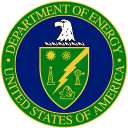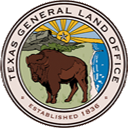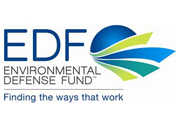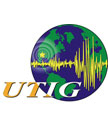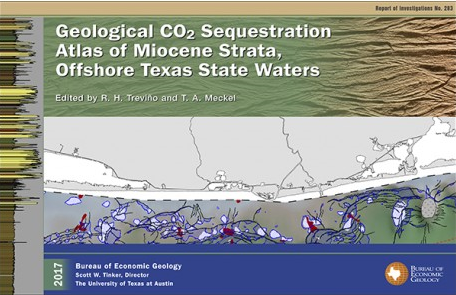Texas Offshore Miocene Project
2009-2014 Project Overview
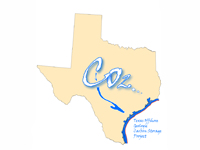
The Texas Offshore Miocene Project was a substantial 5-year effort undertaken by the Gulf Coast Carbon Center at the Bureau of Economic Geology to investigate the regional geologic potential of Miocene-age rocks of Texas State Submerged Lands to store CO2 for geologically significant periods of time. Such geologic storage provides current and future emitting industries with a viable environmental alternative to the current practice of atmospheric release. The results of this study provide the next steps in making permanent geologic storage of CO2 a commercial reality.
The Texas Offshore Miocene Project has three major objectives:
- To evaluate the storage resource of offshore State lands by refining capacity estimates.
- To verify the ability of the Miocene-age rocks of the region to safely and permanently store significant amounts of anthropogenic CO2.
- To identify at least one specific site that can accept at least 30 million tons of CO2 from future commercial CCS operations.
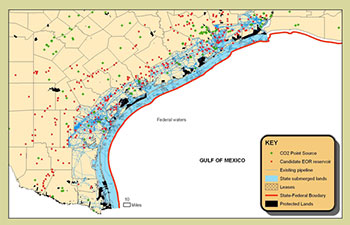
This project focused on identification of specific Miocene–age reservoirs and sealing intervals on the middle and upper Texas coast, where capture and transportation are most likely to develop in the near-term. Specific geologic storage sites identified will have potential to store at least 30 million tons of CO2 and will be tailored to meet the full life-cycle emissions of associated CO2 sources.
Advantages of geologic sequestration in offshore environments are:
- Minimized risks to Underground Sources of Drinking Water (USDW);
- Minimized risks to human health and safety;
- Monitoring options are readily available;
- The surface and subsurface rights are owned by a single entity (i.e., State of Texas GLO) that is prepared to lease them for offshore storage.
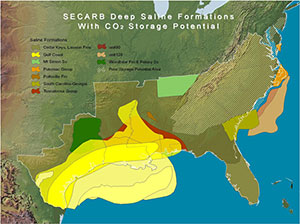
This investigation was co-directed by Dr. Tip Meckel and Mr. Ramon Treviño and was funded by the Department of Energy and the Texas General Land Office, which oversees leases and manages Texas' extensive offshore Submerged Lands. This study received commitments of in-kind (data) support from ION Geophysical Corporation, Formosa Plastics Corporation and Formosa's subsidiary Neumin Production Company. Organizations collaborating on the proposed study include the University of Texas Institute for Geophysics, The University of Texas at Austin Department of Petroleum and Geosystems Engineering, Los Alamos National Laboratory and Sandia Technologies, Inc.
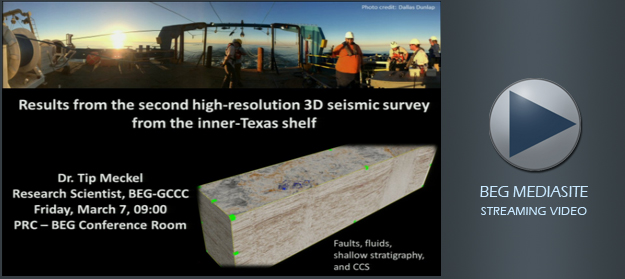
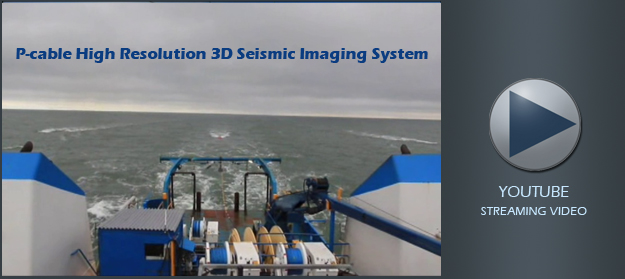
The project was structured as outlined below.
Phase 1
- Task 1.0: Project Management, Planning, and Reporting
- Task 2.0: Regional Significance
- Task 3.0: Capacity Estimates
- Task 4.0: Injectivity
- Task 5.0: Stratigraphic Containment
- Task 6.0: Brine Containment
- Task 7.0: Mineralization Containment
- Task 8.0: Leakage Pathways
Phase 2
Summary of Project Successes
Carr, D. L., Wallace, K. J., Yang, C., and Nicholson, A. J., 2016, CO2 sequestration capacity sectors in Miocene strata of the Offshore Texas State Waters: Gulf Coast Association of Geological Societies Journal, v. 5, p. 130–140. Available online here: http://www.gcags.org/exploreanddiscover/2016/00103_carr_et_al.pdf
Carr, D. L., and Rhatigan, C. H., 2017, Chapter 6: Field-scale example of a potential CO2 sequestration site in Miocene sandstone reservoirs, Brazos Block 440-L Field, in Treviño, R. H. and Meckel, T. A., eds., Geological CO2 sequestration atlas of Miocene strata, offshore Texas state waters: Austin, Tex., Bureau of Economic Geology, Report of Investigations, no. 283, p. 47–56. http://doi.org/10.23867/RI0283D.
Carr, D. L., Wallace, K. J., Nicholson, A. J., and Yang, C., 2017, Chapter 5: Regional CO2 static capacity estimate, offshore Miocene saline aquifers, Texas state waters, in Treviño, R. H. and Meckel, T. A., eds., Geological CO2 sequestration atlas of Miocene strata, offshore Texas state waters: Austin, Tex., Bureau of Economic Geology, Report of Investigations, no. 283, p. 37–46. http://doi.org/10.23867/RI0283D.
Lu, J., Mickler, P. J., Nicot, J.-P., Yang, C., and Romanak, K. D., 2014, Geochemical impact of oxygen on siliciclastic carbon storage reservoirs. International Journal of Greenhouse Gas Control, 21, p. 214–231. https://doi.org/10.1016/j.ijggc.2013.12.017.
Lu, J., Carr, D. L., Treviño, R. H., Rhatigan, J.-L. T., and Fifariz, R., 2017, Chapter 3: Evaluation of lower Miocene confining units for CO2 storage, offshore Texas state waters, northern Gulf of Mexico, USA, in Trevino, R. H. and Meckel, T. A., Geological CO2 sequestration atlas of Miocene strata, offshore Texas state waters: Austin, Tex., Bureau of Economic Geology, Report of Investigations, no. 283, p. 14–25. http://doi.org/10.23867/RI0283D.
Meckel, T. A., 2013, Digital Rendering of Sedimentary-relief Peels: Implications for Clastic Facies Characterization and Fluid Flow: Journal of Sedimentary Research, v. 83 (5–6), p. 495–501. https://doi.org/10.2110/jsr.2013.43.
Meckel, T. A., Treviño, R., Carr, D., Nicholson, A., & Wallace, K., 2013, Offshore CCS in the Northern Gulf of Mexico and the Significance of Regional Structural Compartmentalization. Energy Procedia, v. 37, p. 4526–4532. https://doi.org/10.1016/j.egypro.2013.06.359.
Meckel, T. A., Bryant, S. L., & Ganesh, P. R., 2015, Characterization and prediction of CO2 saturation resulting from modeling buoyant fluid migration in 2D heterogeneous geologic fabrics. International Journal of Greenhouse Gas Control, v. 34, p. 85–96. https://doi.org/10.1016/j.ijggc.2014.12.010.
Meckel, T. A., & Mulcahy, F. J., 2016, Use of novel high-resolution 3D marine seismic technology to evaluate Quaternary fluvial valley development and geologic controls on shallow gas distribution, inner shelf, Gulf of Mexico. Interpretation, 4(1), SC35-SC49. https://doi.org/10.1190/INT-2015-0092.1.
Meckel, T. A., and Rhatigan, J.-L. T., 2017, Chapter 2: Implications of Miocene petroleum systems for geologic CO2 sequestration beneath Texas offshore lands, in Treviño, R. H., and Meckel, T. A., eds., Geological CO2 sequestration atlas for Miocene strata offshore Texas state waters: The University of Texas at Austin, Bureau of Economic Geology Report of Investigations No. 283, p. 7–13, http://doi.org/10.23867/RI0283D.
Meckel, T. A., Nicholson, A. J., and Treviño, R. H., 2017, Chapter 4: Capillary aspects of fault-seal capacity for CO2 storage, lower Miocene, Texas Gulf of Mexico, in Treviño, R. H., and Meckel, T. A., eds., Geological CO2 sequestration atlas for Miocene strata, offshore Texas state waters: Austin, Texas, The University of Texas at Austin, Bureau of Economic Geology, Report of Investigations, no. 283, p. 26–35, http://doi.org/10.23867/RI0283D.
Mickler, P. J., Yang, C., Lu, J., and Lankford, K. D., 2014, Laboratory Batch Experiments and Geochemical Modelling of Water-rock-super Critical CO2 Reactions in Gulf of Mexico Miocene Rocks: Implications for Future CCS Projects. Energy Procedia, v. 63, p. 5512–5521. https://doi.org/10.1016/j.egypro.2014.11.584.
Treviño, R. H., and Rhatigan, J.-L. T., 2017, Chapter 1: Regional geology of the Gulf of Mexico and the Miocene section of the Texas near-offshore waters, in Treviño, R. H., and Meckel, T. A., eds., Geological CO2 sequestration atlas of Miocene strata, offshore Texas state waters: Austin, Texas, The University of Texas at Austin, Bureau of Economic Geology, Report of Investigations, no. 283, p. 3–6, http://doi.org/10.23867/RI0283D.
Wallace, K. J., Rhatigan, C. H., Treviño, R. H., and Meckel, T. A., 2017, Chapter 7: Estimating CO2 storage capacity in a saline aquifer using 3D flow models, lower Miocene, Texas Gulf of Mexico, in Treviño, R. H., and Meckel, T. A., eds., Geological CO2 sequestration atlas of Miocene strata, offshore Texas state waters: Austin, Texas, The University of Texas at Austin, Bureau of Economic Geology, Report of Investigations, no. 283, p. 57–61. http://doi.org/10.23867/RI0283D.
Wallace, K. J., Meckel, T., Carr, D. L., Treviño, R. H., and Yang, C., 2014, Regional CO2 sequestration capacity assessment for the coastal and offshore Texas Miocene interval: Greenhouse Gases Science and Technology, v. 4, p. 53–65, http://doi.org/10.1002/ghg.1380.
Yang, C., Treviño, R. H., Zhang, T., Romanak, K. D., Kerstan, W., Lu, J., Mickler, P., and Hovorka, S. D., 2014, Regional assessment of CO2–solubility trapping potential: A case study of the coastal and offshore Texas Miocene interval: Environmental Science and Technology, v. 48, p. 8275–8282, http://doi.org/10.1021/es502152y.
Last Updated: March 31, 2025

